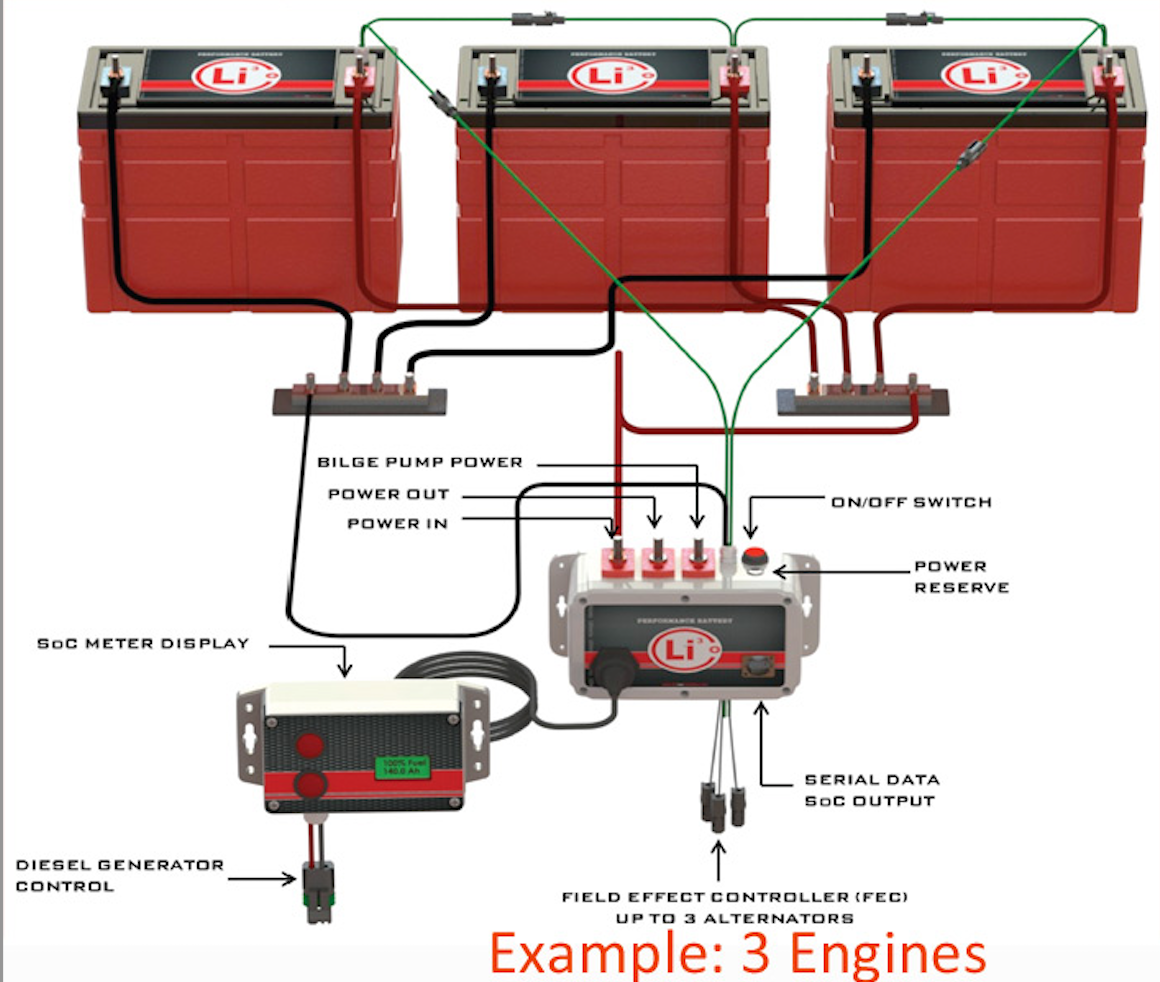Electric Boats, Part 8: Battery Management Systems (BMS)

We know that a boat has different power needs and draws the appropriate current from the battery pack, but does the current come from one cell at a time or from all the cells at once or somewhere in between? That’s where a Battery Management System (BMS) comes in.
Peace of Mind
The BMS can rightfully be considered the brains of the operation. It monitors and manages the battery during discharging and charging, balancing the voltage and current of the cells so that the work of the pack is shared equally and safely.
Overall, its function is to protect the battery — and you — by constantly monitoring every cell in the pack and calculating how much current can safely go in and how much can safely come out. If you think of the minimum and maximum voltages and amps in the battery specifications, they apply to the battery pack as a whole and to each individual cell.
Through this monitoring it acts as the battery’s fuel gauge and calculates the overall state of charge — how much energy is remaining in the battery pack.

It also monitors temperature and checks for indications of any loose connections, short circuits or insulation problems in the cells, modules and pack.
If the BMS detects anything unsafe in the operation, it will shut down the battery. It will also shut down the battery if it detects activity like excess or deficient voltage that could damage any cells. Aside from safety, this also extends the lifespan of the pack.
The BMS is usually a separate piece of equipment, but can also be built into the pack itself, in which case the pack is referred to as a smart battery.